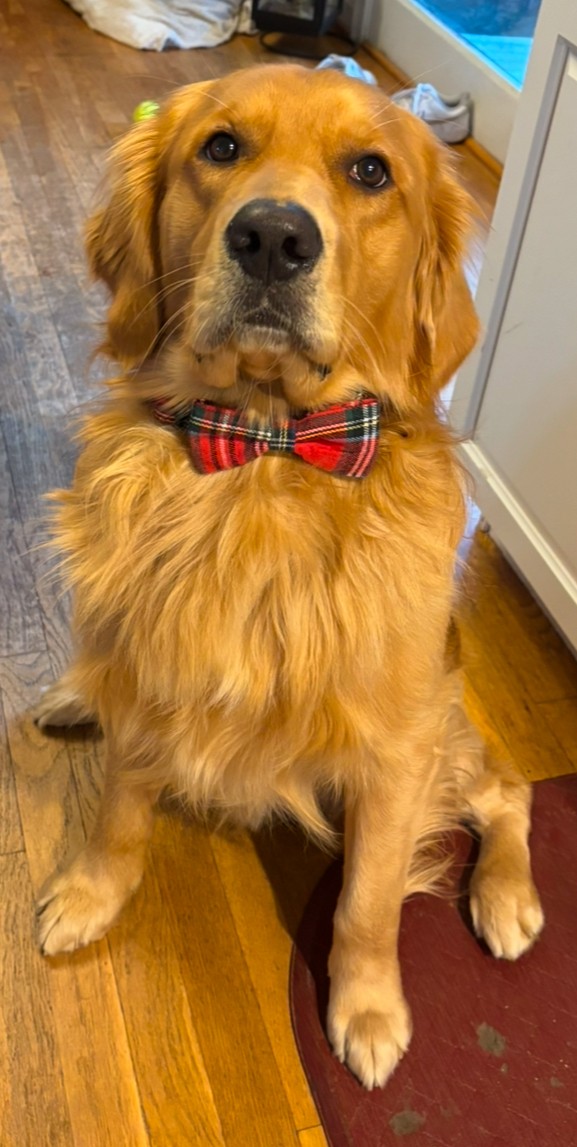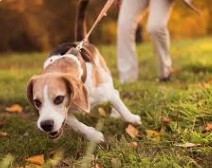Waffles, our sweet golden retriever, is turning two years old! 🐶💛
To celebrate, we’re heading to Dewey Beach for the Golden Jubilee—a big weekend party just for golden retrievers! There will be beach time, wagging tails, and so many new friends to meet. We can’t wait!
🍠 Waffles Needs Fuel to Play!
Big play days mean big energy needs. That’s why I made Waffles a special treat:
Sweet Potato & Greek Yogurt Refuel Bites.
Sweet Potato & Greek Yogurt Refuel Bites.
They are:
- Easy to make
- Full of healthy protein
- Great for pups on the go
This recipe comes from my new dog treat book, Furever Nourished: Superfood Dog Treat Recipes Your Dog Will Love. 🐾
✅ Try This Easy Dog Treat Recipe
Sweet Potato & Greek Yogurt Refuel Bites (from Furever Nourished in the "Energy & Endurance" section)
Ingredients:
- ¾ cup mashed sweet potato
- ¼ cup plain Greek yogurt
Instructions:
- Mix both ingredients until smooth.
- Spoon or pipe onto freeze-dryer trays.
- Freeze-dry as your machine says.
Why it’s great: High in protein and complex carbs—perfect for active pups like Waffles
If I have enough time this week, I’m going to make extra treats to share with Waffles’ new friends at Dewey. If your pup gets one, I hope they love it!
This recipe is just one of the many in my new book. You’ll find treats made with:
- 9 superfoods like pumpkin, blueberries, and yogurt
- 5 easy methods (bake, no-bake, frozen, dehydrated, freeze-dried)
- 8 health goals, like calming treats, dental chews, and energy bites
🐶 Join the Pack!
If you love learning about healthy treats and want support in raising a happy pup, come join our
Facebook group: Furever Dog Moms

Thanksgiving is a time to be thankful, eat yummy food, and spend time with the people and pets we love. But not all the food on your plate is safe for your dog.
Let’s talk about what foods are okay for dogs and what foods should stay far away from their bowl.
Foods That Are a Big No in Our House
Even though Waffles gives me that sweet look, there are some things I never let him have. These can be dangerous, even if it’s just a little bite.
- Turkey bones can break and hurt their throat or belly. Waffles doesn’t get any bones.
- Stuffing made with onions or garlic is not safe for dogs.
- Chocolate or sweet treats with fake sugar like xylitol can make dogs very sick.
- Grapes or raisins, sometimes in salads or desserts, can hurt their kidneys.
- Creamy foods, casseroles, and buttery dishes upset tummies and can be too rich.
- Alcohol is very harmful to dogs, even in small amounts.
What Waffles Is Allowed to Enjoy
Now for the good news. Some Thanksgiving foods are safe for dogs, but only if they are served plain and in small bites. Here’s what I let Waffles enjoy:
- Plain turkey breast with no bones or skin. He only gets a few small bites.
- Steamed green beans with no salt. Crunchy and healthy.
- Mashed sweet potatoes with nothing added. No butter or sugar.
- A little plain canned pumpkin. It helps with digestion and Waffles loves it.
- Apple slices with no seeds. A sweet, crunchy treat.
I always make Waffles his own little Thanksgiving plate with safe foods just for him. It helps him feel like he’s part of the family because he is.
From Our Table to Yours
It feels good to share the holiday with your dog. Just remember, not all people food is dog food. A little care can keep your pup safe and happy all season long.
Want more tips like this? Join our Facebook group where we raise our rescue pups with love, structure, and grace — just like family. Click HERE: https://www.facebook.com/groups/1223583448501457

Going for a walk with your dog should be fun. But if your pup pulls and drags you down the street, it can feel like a big struggle. Don’t worry—you are not alone! Many dogs pull on the leash, and with a little training, they can learn to walk calmly by your side.
Meet Max the Tugboat
One of my clients had a young Labrador we will call Max. Max is sweet, full of energy, and very strong. Max's mom told me that every time she clipped on the leash, she felt like she was being pulled by a tugboat. Walks that were supposed to be happy and relaxing made her feel tired and stressed.
When I met Max, I explained to her that he wasn’t being “bad.” He was just excited to sniff and explore, and no one had shown him how to walk politely on a leash. We worked on some simple steps together. After just a few weeks, Max was walking nicely, and his mom finally enjoyed her time with him. Now she smiles when she tells me their daily walks are her favorite part of the day.
Why Do Dogs Pull?
Dogs pull because the world is exciting! They want to get to that smell, sound, or spot as fast as they can. If pulling gets them there, they’ll keep doing it. That’s why it’s so important to teach them that a loose leash—not pulling—makes the walk move forward.
Easy Tips to Help Your Dog Walk Calmly
- Use the Right Gear
A front-clip harness helps guide your dog back toward you when they pull. A simple 4–6 foot leash works best. Skip the long, retractable leashes while you’re teaching. - Stop When They Pull
The second the leash gets tight, stop walking. Wait until your dog relaxes or looks back at you. Then praise them and start again. They will learn that pulling makes the walk stop, but staying close makes it go. - Reward Good Choices
Bring yummy treats in your pocket. Every time your dog walks beside you or looks up at you, give them one. It shows them you love their good behavior. - Turn Around
If your pup keeps pulling, calmly turn and walk the other way. They will learn that rushing ahead doesn’t get them where they want to go. - Keep It Short
Start with five or ten minutes of practice in a quiet place. Little by little, add more time and new places as your dog improves.
Walking Together is Better
With patience and practice, your dog can learn to walk politely just like Max. You don’t need to feel pulled or frustrated anymore. Walking side by side makes every walk calmer, safer, and more fun. And best of all, it helps you and your dog feel even closer as best friends.
💛 Want even more help with your pup’s training?
Check out my Puppy Training Cheat Sheets & Progress Trackers. They’ll teach your puppy the 5 essential commands every family needs—sit, stay, come, down, and heel—with easy step-by-step guidance. Plus, they keep the whole family on the same page. All for just $9.97!
Check out my Puppy Training Cheat Sheets & Progress Trackers. They’ll teach your puppy the 5 essential commands every family needs—sit, stay, come, down, and heel—with easy step-by-step guidance. Plus, they keep the whole family on the same page. All for just $9.97!

Potty training a puppy is one of the biggest challenges new dog parents face. It takes time, patience, and consistency. But did you know most people make the same mistake over and over again? This mistake makes potty training take much longer — and causes stress for both you and your pup.
So what is the #1 mistake in potty training a puppy?
👉 Not giving your puppy enough chances to go outside.
Puppies have tiny bladders and very little control. They can’t “hold it” like older dogs. If you wait too long between potty breaks, your puppy will have accidents in the house. Over time, this teaches your pup the wrong lesson — that it’s okay to pee or poop inside.
When I brought home my golden retriever, Waffles, I learned this the hard way. On his second day, I thought I could run to switch the laundry before taking him out. By the time I came back, there he was — sitting proudly in a little puddle in the living room. That mess reminded me that puppies simply can’t wait, no matter how quick you think you’ll be!
How Often Should Puppies Go Out?
Here’s a simple rule: your puppy can usually hold it for one hour per month of age (up to about 6 hours).
- A 2-month-old puppy → every 2 hours
- A 3-month-old puppy → every 3 hours
- A 4-month-old puppy → every 4 hours
This means you’ll need to take your puppy out a lot during the day — and even at night for very young pups
Want to know how to avoid the #1 mistake in potty training a puppy? Try these simple steps:
- Stick to a schedule: Take your puppy out first thing in the morning, after meals, after naps, after playtime, and before bed.
- Use a crate or playpen: Puppies don’t like to go potty where they sleep. This helps teach them to hold it until they’re outside.
- Praise and reward: Every time your puppy goes potty in the right spot, use a happy voice and give a small treat. This teaches them where they should go.
The #1 mistake in potty training a puppy is waiting too long between potty breaks. By taking your pup out often and rewarding success, you’ll avoid accidents and build good habits fast.
⭐ Pro Tip: Consistency is everything. The more chances your puppy has to go outside, the quicker they’ll learn to potty in the right place.
✨ Want more help with potty training?
Join my free Facebook group where I host the “3 Steps to a Potty Trained Puppy” workshop.
In this free training, I’ll walk you through my 3 simple, proven steps to help your puppy understand where (and when!) to go potty—without stress, confusion, or endless mess.
You’ll learn:
✅ The “Hold Time” Rule – so you can set a realistic potty schedule
✅ The Power of Routine – how consistency builds faster success
✅ Crate Training Done Right – using it as a safe, supportive tool (not punishment)
Whether you just brought your puppy home or have been struggling for weeks, you’ll walk away with a clear plan you can start using the same day—and see results fast.

Have you ever booked a trip, only to later find out you paid more than you needed to? I know I have — and it’s frustrating. You do the work of planning, you get excited about your destination, and then you see the exact same trip advertised for way less. Ouch.
That’s why I want to let you in on the one question I always ask before hitting that “Book Now” button:
👉 “Am I really getting the best value for my money?”
Notice I didn’t say the cheapest price. Those two things aren’t always the same.
Price vs. Value
Here’s the truth: you can find cheap travel everywhere — but cheap often comes with hidden costs. Maybe it’s inconvenient flight times, endless layovers, resort fees you didn’t see coming, or cancellation policies that lock you in with no flexibility. Suddenly, that “cheap” deal doesn’t feel so cheap.
Instead, I’ve learned to focus on value. Value means comparing what’s included and what’s guaranteed. It means asking:
- Does this booking include perks like free breakfast, airport transfers, or resort credits?
- Are taxes and fees included in the price? gratuity?
- Am I protected if prices drop after I book?
- Do I have flexible options if plans change?
When you start looking at travel this way, you’ll see how quickly the savings add up — not just in dollars, but in peace of mind.
A Personal Example
Last year, I priced out a hotel stay for my family. On a big-name site, it looked like the best deal — until I added up all the extras: parking fees, breakfast costs, and resort fees. When I compared it through my travel membership, not only was the base rate lower, but those extras were either included or heavily discounted. In the end, the savings were hundreds of dollars.
All because I asked the right question.
Your Turn
So before you book your next trip — whether it’s a quick weekend getaway or the bucket list adventure of a lifetime — pause for just a second and ask: Am I really getting the best value?
It’s a simple question, but it can save you stress, time, and yes — a whole lot of money.
Because the goal isn’t just to travel more. It’s to travel smarter. ✈️💡
If you want more ways to stretch your travel dollars and make every trip unforgettable,
come join me inside my free Facebook group:
It’s where I share tips, tools, and real-life strategies to help families travel smarter, not harder.
And if you’re curious about the platform I use — the one that guarantees I never have to wonder if I’m getting the best deal (and even gives 150% back if you find it cheaper) — then you’ll love exploring the Travel Smarter Method with us. Because the truth is, it’s not about booking another trip. It’s about creating trips that matter. 🌍✈️💛

